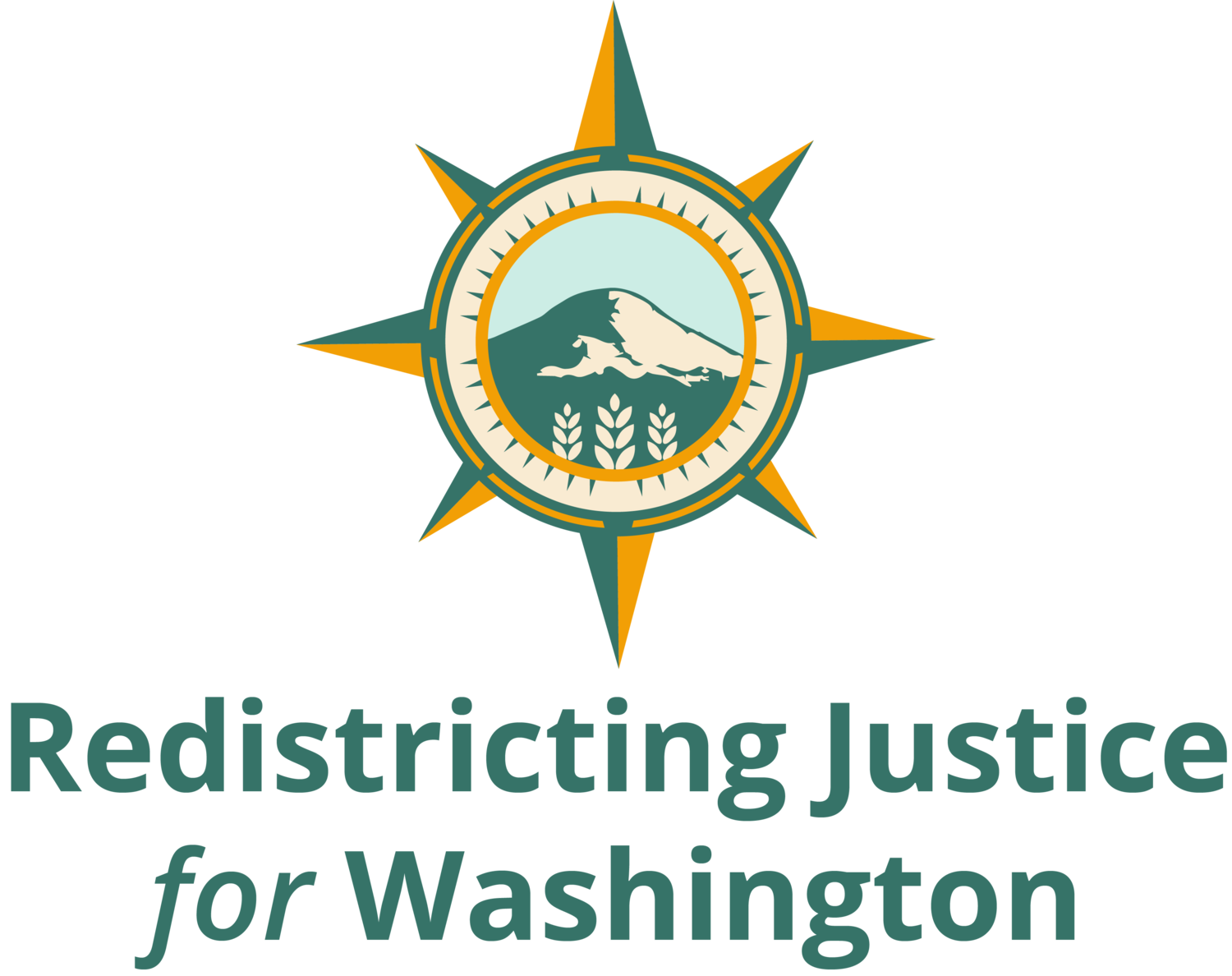About Redistricting
Every 10 years, the US Census counts all people living in the United States. The year after the census takes place, each state draws new political district lines, using the new information gained from the census. They update congressional districts (for our US Senators and Representatives in D.C.), as well as legislative districts (for our State Senators and Representatives in Olympia).
In Washington State, a bipartisan Redistricting Commission takes on the task of drawing new district lines. The Commission is composed of two Democratic appointees, two Republican appointees, and one nonpartisan chair.
Over the course of 2021, the Redistricting Commission and communities created priorities and maps for redistricting. Some of the maps remain in contention today.
By law, every district must have a roughly equal number of people. But beyond that, the Redistricting Commission has a lot of choices to make about how to draw the new district map. Poorly drawn districts might be made to improve a politician’s chances at reelection, or divide communities of color into two separate districts so that they lose voting power. Our job is to make sure that the new district lines prioritize people over politicians, and protect the voting power of communities of color and tribal members.
We assembled a coalition of organizations that support equitable redistricting in Washington so that the Redistricting Commission heard our voices loud and clear. Now, we’re managing a lawsuit over Voting Rights Act violations and transitioning our coalition over to the now-City-level redistricting.
Resources to learn more about redistricting:
FiveThirtyEight: The Gerrymandering Project: this is a great, interactive introduction to redistricting and gerrymandering
Seattle Times: “Changes ahead for Washington state’s political landscape”
Seattle Times: “Help shape more equitable redistricting in Washington state”



